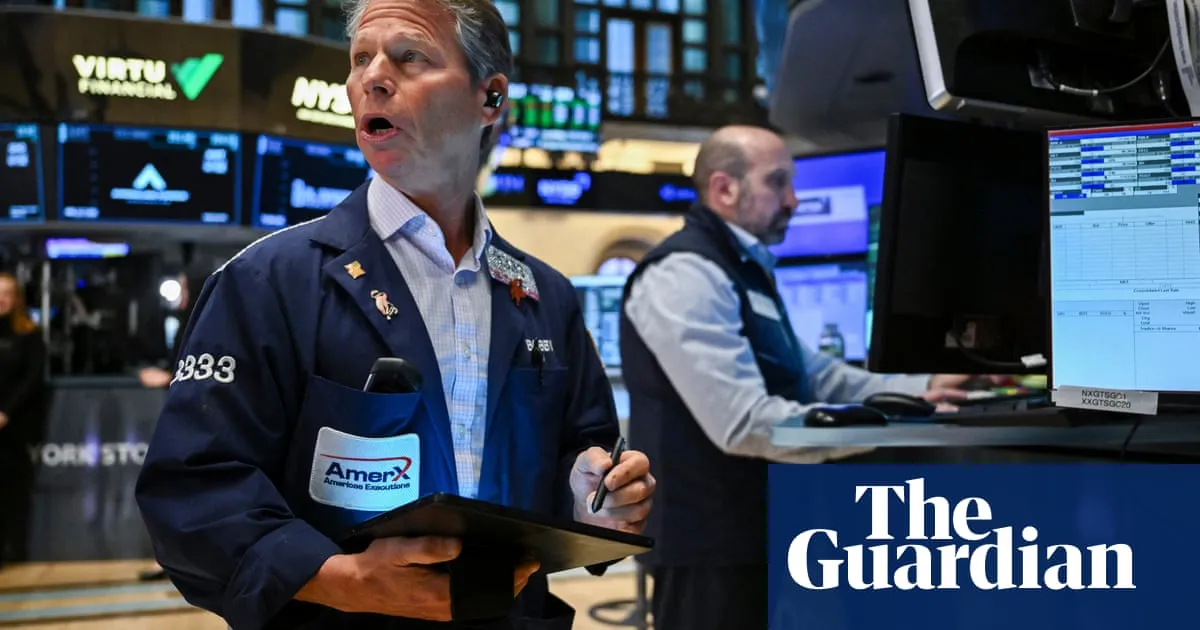
US government bonds, historically regarded as one of the safest financial assets globally, are currently facing a significant sell-off. This turmoil is primarily driven by Donald Trump’s recent escalation of the tariff war with China, which has instigated widespread panic across various sectors of the financial markets. The market reactions indicate that the implementation of new tariffs, including a staggering 104% levy on Chinese goods, is eroding investor confidence in the US as a stable pillar of the global economy.
The yield, or interest rate, on the benchmark 10-year US Treasury bond surged by 0.16 percentage points to reach 4.42% on Wednesday, marking its highest level since late February. This week has seen the three most significant intraday movements since Trump's election in November. Notably, yields move inversely to prices; hence, the sharp increase in yields signifies a drop in bond prices as demand wanes.
The situation is even more pronounced for the 30-year bond, where yields briefly exceeded 5%, reflecting the highest rate since late 2023. The last recorded trading yield was 4.9157%, up by 0.2 percentage points from the previous day. Calvin Yeoh, a portfolio manager at Blue Edge Advisors, remarked, “This is a fire sale of Treasuries,” and pointed out that such volatility has not been observed since the chaotic days of the pandemic in 2020.
Market analysts are increasingly speculating that the US Federal Reserve may need to intervene. Jim Reid of Deutsche Bank commented, “Markets are pricing a growing probability of an emergency interest rate cut, similar to the measures taken during the Covid turmoil and the peak of the Global Financial Crisis in 2008.”
The repercussions of the US bond sell-off are not confined to American markets; UK bonds are also experiencing severe pressure. The yield on a 30-year UK gilt soared to 5.518% on Wednesday, an increase of 16 basis points that exceeded the previous 27-year high of 5.472% set in January. Shorter-dated 10-year gilt yields rose slightly to 4.69%, while two-year yields dipped to 3.92%. The rise in gilt yields is expected to complicate borrowing for the UK government, making it more challenging to fund investment initiatives.
As tensions escalate, China’s response to the increasing US tariffs suggests a looming confrontation between the world’s two largest economies. Lin Jian, a spokesperson for China’s foreign ministry, stated, “When challenged, we will never back down.” Meanwhile, the Chinese commerce ministry declared, “China will fight to the end if the US side is bent on going down the wrong path.” Further countermeasures from Beijing are anticipated, although it remains unclear if these measures will include the sale of US Treasuries, which could inflict additional financial strain on the US administration.
As the tariffs take effect, global stock markets are enduring another tumultuous day. Japan’s Nikkei benchmark index plummeted nearly 4%, while Taiwan’s index dropped by 5.8%. Hong Kong’s Hang Seng index managed to recover some losses, closing down by 0.4%, and South Korea’s Kospi 200 index declined by 1.8%. In contrast, China’s stock markets demonstrated resilience, with the Shanghai SSE composite index ending 1.1% higher and the Shenzhen SE composite rising by 2.2%.
In Europe, major markets reacted negatively, with the FTSE 100 in London falling by 2.2% in early trading on Wednesday, effectively reversing most of Tuesday’s gains. Germany’s Dax index experienced a decline of approximately 2.3%, while France’s Cac 40 and Spain’s Ibex index fell by 2.4% and 2%, respectively.
The financial landscape is shifting dramatically as the tariff war intensifies, prompting investors to reevaluate their strategies in a rapidly changing environment.